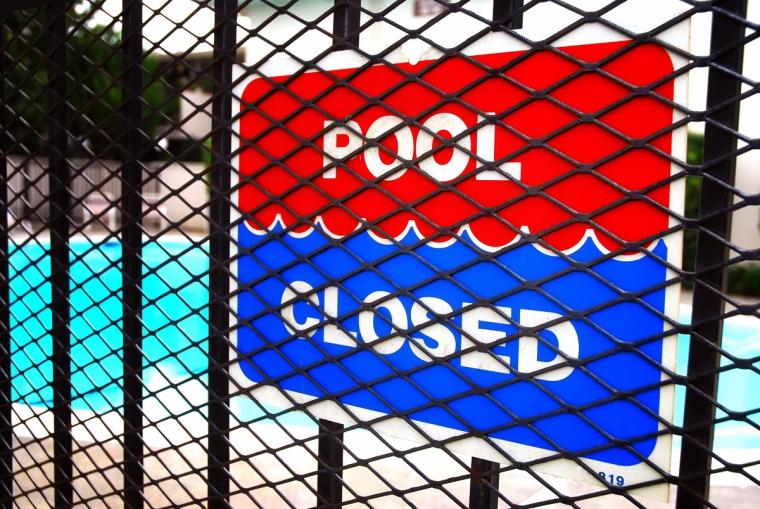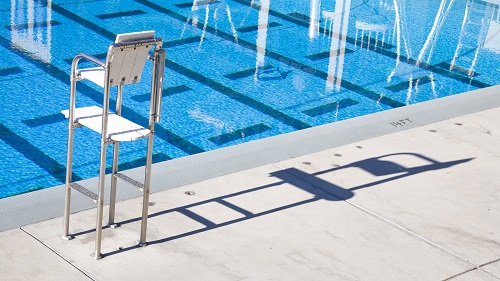
Second verse, same as the first. Or actually, third verse, more like the second. And it might even be a remake of an even older song but that’s a story for another time.
The nationwide lifeguard shortage that came to national attention when pools reopened in 2021 has continued. Unfortunately, municipal pools and waterparks have been hit the hardest since they can’t afford to pay the wages (and include the benefits) that private facilities offer.
The hard truth: Lifeguarding is not high-paying (it’s also a seasonal job with part-time hours and, in general, no benefits), and in many cases, teens and college students can make more money by taking other jobs. It takes time-intensive training: lifesaving, CPR, first aid and in many states, water chemistry and pool operator training – all of which costs money, even when it is offered in public settings, and all of which expires and has to be re-upped after a certain time.
High school and college students, as a rule, can make better money, with less red tape by taking jobs in retail and restaurants, and those jobs do not require training or recertification.
And adults who are seeking work aren’t jumping into lifeguard chairs — most need year-round income and benefits for their families (something lacking in most lifeguarding jobs.) Municipalities nationwide have tried offering higher wages and signing bonuses to attract lifeguards, but jobs are still going unfilled because of a lack of qualified applicants.
Across the nation, with pools and water parks shortening their hours and, in many cases, remaining closed for the season, there has been an uptick of pool break-ins with disastrous results. Last summer, a teenager in Connecticut drowned during an after-hours break-in. Around that same time in Baltimore, a teenager nearly drowned after breaking into a local pool (he was rescued by members of the Baltimore City Fire Department.) Unfortunately, that same summer, a second Baltimore teen drowned after breaking into a health club’s pool after hours.
Nationwide, cities have been ramping up their marketing campaigns since (literally) pools closed last fall. Phoenix, Arizona has been putting out the call, noting “The Phoenix Parks and Recreation Department said they’re working hard to try to open each of the city’s 29 pools this summer. Phoenix said it takes about 650 lifeguards to open each of the 29 pools. It’s a goal they fell short of last year, only able to open 14 pools, after hiring between 380 to 400 lifeguards throughout the summer. Now in 2023, there’s a big incentive to attract more lifeguards to city pools. Phoenix is offering a $3,000 incentive on top of lifeguard pay at $15.72 an hour.”
 Let that sink in for a moment. A $3,000 incentive for a 15-year-old (the eligible age.) That’s not an inconsiderable number. In New York, the hourly wage is $19.46.
Let that sink in for a moment. A $3,000 incentive for a 15-year-old (the eligible age.) That’s not an inconsiderable number. In New York, the hourly wage is $19.46.
At the same time, though, there’s a question: Will it work? The answer: Maybe – but there’s a lot of competition. Last year, Philadelphia was able hire less than 75 percent of the lifeguards it needed and not all pools could be open. In Indiana, a water park could be open only five days a week (rather than seven) because of staffing shortages.
And still, cities are trying. Austin, Texas has a unique strategy: Marketing its jobs by having its lifeguards talk about what they liked about sitting in the chair. Massachusetts is offering more than $1,200 in incentives.
It’s not like destinations haven’t been trying. The bonuses are there. And in 2021, some destinations tried an innovative strategy: recruiting and training out-of-work adults to run pools and beaches. (Hey, Baywatch for real!)
The need for lifeguards continues and the statistics are grim. According to the Centers for Disease Control and Prevention, drowning is a leading cause of death for children. In the United States, more children ages 1 to 4 die from drowning than from any other cause of death, except birth defects. For children ages 1 to 14, drowning is the second leading cause of unintentional injury or death after motor vehicle crashes.
Despite the best efforts of park and municipal programs, children from minority and disadvantaged backgrounds are more likely to drown since they often have little to no access to swimming lessons. (In fact, the lack of elite Team USA swimmers from minority backgrounds, say some, is a holdover from the days when only white families could join swim clubs.)
And the problem continues, weighted down by the evidence itself. USA TODAY notes, “as of 2020, there were 309,000 public swimming pools compared to 10.4 million private or residential pools in the United States, according to the Association of Pool & Spa Professionals.”
It’s easy to ask “Why don’t they just make a learn-to-swim law and put it in every school curriculum?” The problem is, of course, that for every question that starts out “Why don’t they just…?” is a complex answer. And in this case, the problem stems from the fact that laws are mandated not just state by state, but often, county by county.
In other words, anyone who asks “Why can’t they just…?” does not understand: They just can’t.
Last year, Florida passed the “Every child a swimmer” law, but even that was not perfect; it did not mandate swimming lessons for children as part of the P.E. curriculum. However, it does have some advantages: schools in the state are now held responsible for providing information to parents on the importance of learning to swim – and resources are made available to parents who are financially disadvantaged, allowing them to access swim lessons for their children. In other words, it’s not what everyone wants but it’s a start. (Also in 2022, Louisiana approved a requirement that public schools offer water safety training to children in grades K-12.)
Unfortunately, learn-to-swim laws are a hard sell, considering the history of similar efforts in the past:
- In 2010, South Carolina introduced a measure requiring any state-funded school within 10 miles of a public pool to offer free swimming instruction to all students. Under AB 3030, students would be required to complete two years of swim education before graduating from high school.
- In 2015, Minnesota lawmakers tried to push through a measure requiring the commissioner of education to develop swim resources statewide.
- In 2020, Ohio State Senator Theresa Gavarone, R-Bowling Green, introduced legislation to ensure children would have access to swim lessons.
None of these measures made it to law; through the years, other states and other jurisdictions have floated similar concepts; however, all languished on the drawing board because of two schools of thought: first, the belief that it was up to parents to teach their children to swim (or make sure they took lessons); and second, an objection to the overall cost of implementing learn-to-swim programs in schools, particularly schools without easy access to pools during the school year.
Without children learning to swim, the pool (so to speak) of potential lifeguards is lessened nationwide. And as another summer ramps up, there seems to be no end in sight.

